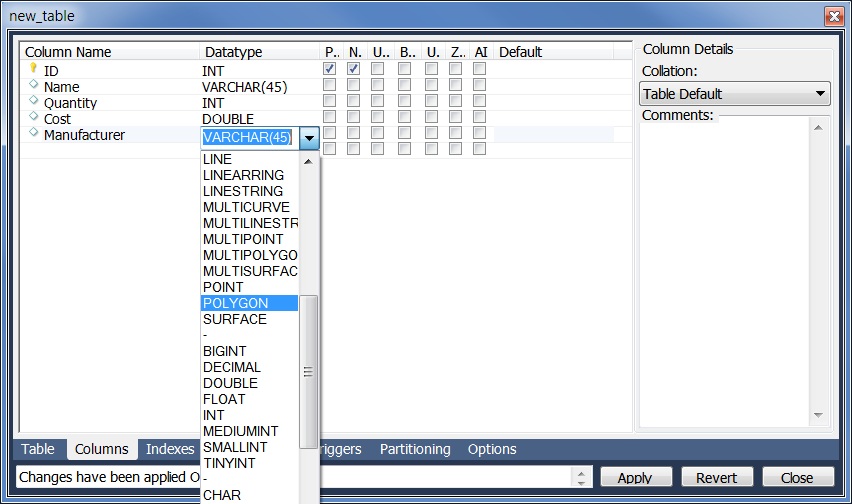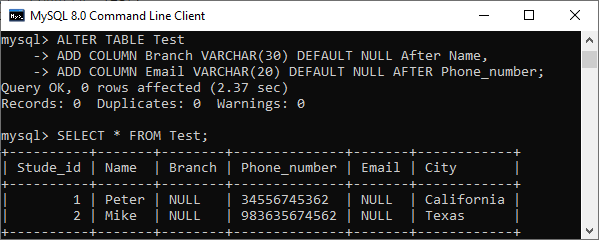



When you execute the command, a warning message will prompt you to confirm whether you want to proceed with the command or not. Now, due to any reason, if the user wants to delete the Foreign key constraint created on the Orders table, then we need to run the ALTER TABLE command written as follows: ALTER TABLE Orders DROP FOREIGN KEY fk_order_book_id We will build up a table named Books with the Primary key column as Book_Id, which will be the parent table by the following statement: CREATE TABLE Books (Book_Id INT PRIMARY KEY AUTO_INCREMENT, Book_Name VARCHAR(255) NOT NULL, Language VARCHAR(50) NOT NULL, Price INT NOT NULL) ENGINE = InnoDB
#Mysql delete column workbench how to
Let us look through examples of how to understand the MySQL Drop Foreign Key command better and illustrate the ways to first create the Foreign key in a table and then perform the drop query for the Foreign key in the server as follows: When you execute the above query, the constraint name “fk_orderid” is removed. Now, if you wish to drop this foreign key constraint, then we can do so by the following ALTER TABLE query along with the DROP keyword: ALTER TABLE Employees DROP CONSTRAINT fk_orderid The foreign key constraint name is “fk_orderid,” where “orderid” is a field in the orders table defined as the primary key and functions as a foreign key in the employee’s table. Suppose you have an employee table in the database, and there is a column that references the foreign key of another table, say orders.
#Mysql delete column workbench update
Also, if the clauses – ON DELETE and ON UPDATE are not specified, then MySQL’s default action will be RESTRICT option.Whereas, only three actions as: SET NULL | RESTRICT | CASCADE, are entirely supported by MySQL. Here, the ref_option denotes five reference options in MySQL as: SET DEFAULT | RESTRICT | SET NULL |CASCADE | NO ACTION.REFERENCES TableName (Column1, Column2, …) Here is a vital syntax that defines a foreign key constraint using the statements CREATE TABLE or ALTER TABLE shown below:ĬONSTRAINT (symbol) FOREIGN KEY IndexName (Column1, Column2, ….).Thus, we state the foreign key on the child table. The relationship of the foreign key contains a parent table with initial column values and a child table with column values that reference the parent table column values. Additionally, foreign key constraints ensure the consistency of the related data. MySQL supports foreign keys, which enable the cross-referencing of associated data across tables.Provide the table name here to view the result.Īfter dropping the Foreign Key, you can ensure this by viewing the structure of that table: SHOW CREATE TABLE TableName How to Drop Foreign Key in MySQL? You can obtain the created constraint name of the particular table by the following command: SHOW CREATE TABLE TableName This constraint name defines the name of the foreign key specified constraint added while creating the table. Next, we must state the constraint name after the keywords drop the foreign key in the above syntax. After this ALTER TABLE keywords, we will specify the table name from which the foreign key will be dropped. The statement ALTER TABLE is used for the Drop Foreign Key query so that the foreign key created in the table can be modified, and the table will be updated. Let’s explain the terms in the syntax as follows: ALTER TABLE TableName DROP FOREIGN KEY ConstraintName


 0 kommentar(er)
0 kommentar(er)
